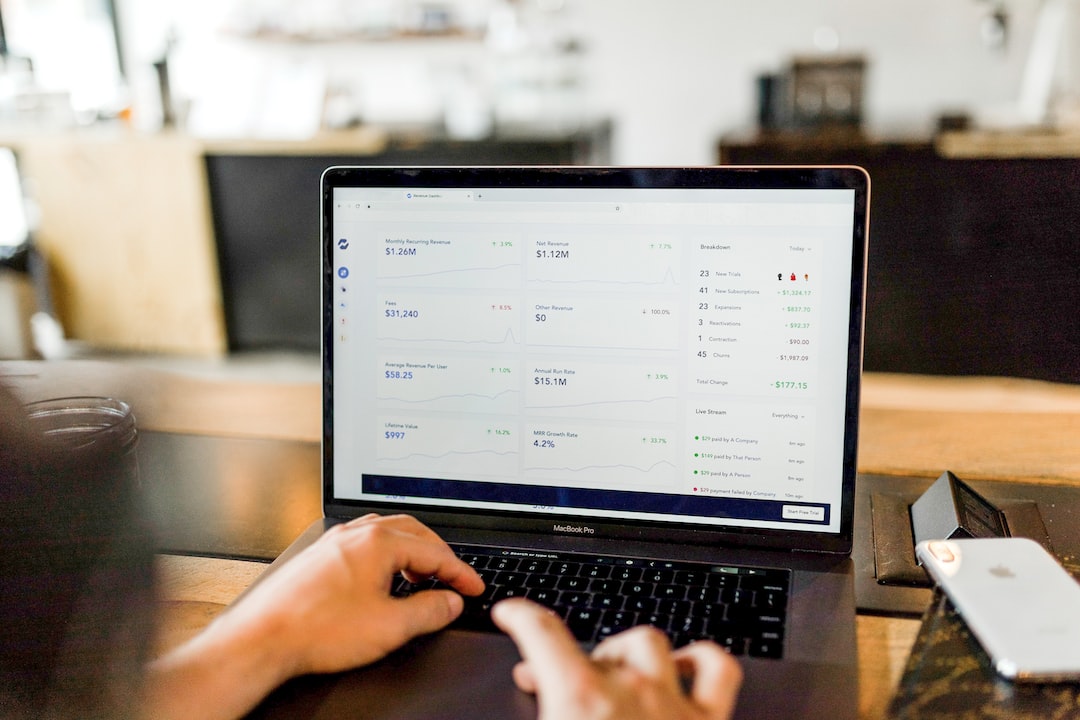Introduction
Having a fast loading website is essential for a good user experience. In this article, we will discuss some web design tips to help improve your website loading speed.
Optimize Your Images
Using unoptimized images can greatly slow down your website loading speed. It is important to only use the image format that best suits your needs, and then optimize the images for web usage. This can be done through various tools such as TinyPNG or compressor.io.
Minify Your Code
Another way to improve your website speed is to minify your HTML, JavaScript, and CSS code. Minifying your code removes any unnecessary characters such as white-space, line breaks, and comments that are not needed. This reduces the size of your files, allowing them to load faster.
Use a Content Delivery Network (CDN)
A content delivery network (CDN) is a network of servers located around the world that cache static content (such as images, CSS, and JavaScript files). This makes it easier for visitors from different parts of the world to access your website as the static content is served from a server closest to them, resulting in faster loading times.
Reduce Redirects
Redirects are used to send visitors from one URL to another, but they can also add latency to your website loading time. It is important to reduce the number of redirects used on your website, as each redirect increases the loading time.
Enable Caching
Enabling caching helps to improve website loading speed by allowing users to store static content, such as images, on their computer for future visits. This means that the browser does not have to re-download the static content every time they visit your website, resulting in a faster loading time.
Use a Good Web Host
Having a reliable web host can make a huge difference in your website loading speed. Make sure to research and find a web host that meets your needs and provides you with fast speeds.
Common Causes of Slower Website Loading Times
When it comes to web design, website loading speed is a major factor in determining the success of any online presence. Websites that load quickly are more likely to keep visitors engaged and convert them into customers. Conversely, slow-loading websites can be ineffecti ve in generating conversions and can turn users away. It’s important to understand why website loading speed matters and what some common causes of slower loading times are.
ve in generating conversions and can turn users away. It’s important to understand why website loading speed matters and what some common causes of slower loading times are.
The more components your site has to manage, the slower it will be. This could refer to anything from large images, long code, or excessive styling. Images are especially tricky; if they are too large, they can take longer to load, slowing down a page’s response time. To counteract this, make sure your images are compressed and optimized for the web. As for code, long scripts can also have an effect on performance. Unnecessary code should be removed, and the remaining HTML, CSS, JavaScript, and other elements should be minified, i.e. simplified and streamlined.
Another common factor that can lead to slower websites is the number of HTTP requests. A single page can easily include dozens of scripts, images, and stylesheets that generate HTTP requests. Each request adds to the page loading time. You can reduce the number of requests by combining multiple files, optimizing images, deferring unused scripts, minifying code, and using content delivery networks.
Caching and Content Delivery Networks
Caching can have a major impact on website performance. Client-side caching works by saving regularly accessed data, such as files, images, and other components, on the user’s hard drive. This allows the page to load faster by bypassing the need to reload the same assets over and over. Server-side caching can also be used to speed up a website by reducing server response time.
Content delivery networks (CDNs) are another effective solution for improving website speed. CDNs are networks of servers distributed across different geographic locations. When a visitor attempts to access a page, the CDN will route traffic to the closest server, reducing the latency of the connection. This helps ensure that users are able to access the page as quickly as possible.
Responsive Design and Lazy Loading
Responsive design is an essential aspect of modern web design. Responsive design ensures that your website automatically adjusts its layout to fit the device it’s being viewed on. This eliminates the need to create and maintain separate versions of your website for desktop and mobile devices, thus streamlining maintenance and optimization. Responsive design also helps improve the user experience, as visitors won’t have to zoom in and out to view your website properly.
Lazy loading is another technique that can help optimize website performance. Lazy loading allows certain elements to be loaded only when they’re required. For example, if a user scrolls down to a certain point of the page, only then will the images at that position be loaded. This approach can help reduce the number of HTTP requests and limit the amount of data that’s transferred, thus drastically improving website loading times.
 Conclusion: Web Design Tips for Improved Website Loading Speed
Conclusion: Web Design Tips for Improved Website Loading Speed
Ultimately, website loading speed is critical for the success of any website. To keep visitors engaged and convert them into customers, it’s important to ensure that your website loads quickly. To improve website loading speed, you should consider compressing images, minifying code, reducing HTTP requests, caching, using CDNs, employing responsive design, and implementing lazy loading. Taking these steps will help ensure that your website functions efficiently and delivers a great user experience.
1. Minify resource files (CSS, JavaScript, and HTML)
2. Use scalable vector graphics (SVG) instead of bitmap images
3. Load JavaScript from an external file
4. Use caching techniques
5. Reduce the number of HTTP requests
6. Enable compression
7. Make sure image dimensions are specified in HTML/CSS
8. Use asynchronous loading for JavaScript and CSS
9. Optimize image files for web
10. Avoid large redirect chains
To go fruther on the topic
If you’d like to explore more on the topic of Web Design Tips for Improved Website Loading Speed, we recommend the following litterature:
1. « Website Performance Optimization: A Comprehensive Guide for Frontend Designers & Developers » by Daniel Eizans
2. « High Performance Web Sites: Essential Knowledge for Front-End Engineers » by Steve Souders
3. « The Science of Web Performance Optimization » by Andrew Betts
4. « High Performance Browser Networking » by Ilya Grigorik
5. « The Web Performance Book » by Stoyan Stefanov
6. « Web Performance in Action » by Tim Kadlec
7. « Front-End Performance for Web Designers and Developers » by Andy Davies
8. « Responsible Responsive Design » by Scott Jehl
9. « Optimizing Web Delivery » by Kyle Simpson
10. « Learning Responsive Web Design » by Clarissa Peterson

 Conclusion: Web Design Tips for Improved Website Loading Speed
Conclusion: Web Design Tips for Improved Website Loading Speed
